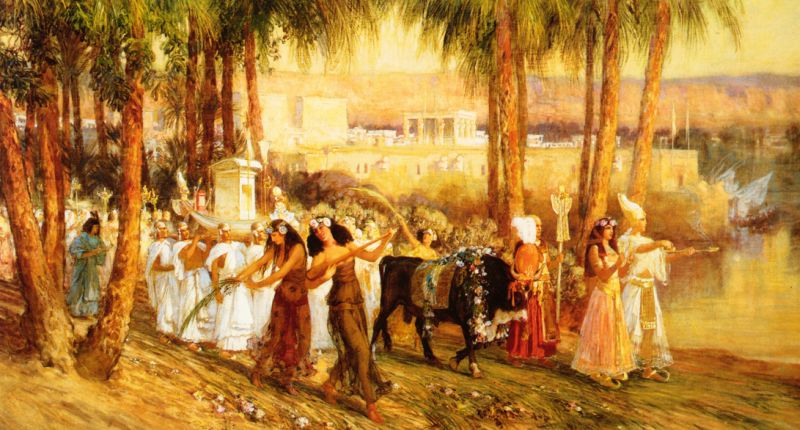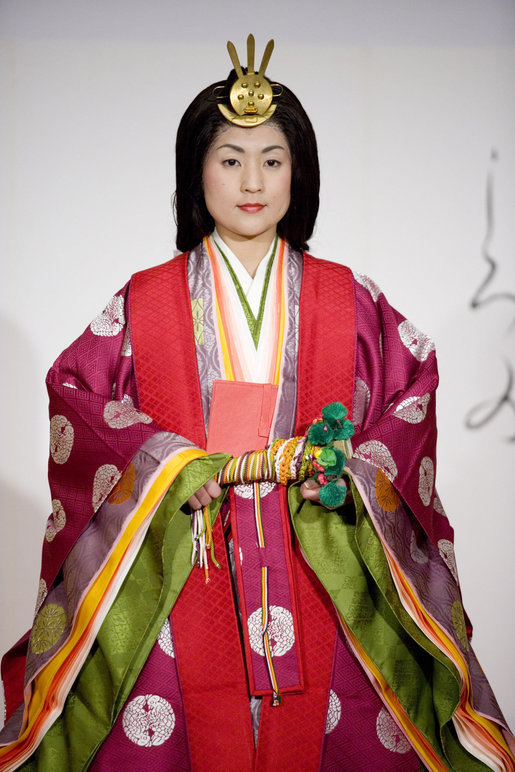|
Jidai Matsuri
The is a traditional Japanese festival (also called matsuri) held annually on October 22 in Kyoto, Japan. It is one of Kyoto's renowned three great festivals, with the other two being the ''Aoi Matsuri'', held annually on May 15, and the '' Gion Matsuri'', which is held annually from 17 to July 24. It is a festival enjoyed by people of all ages, participating in its historical reenactment parade dressed in authentic costumes representing various periods, and characters in Japanese feudal history. Jidai Matsuri traces its roots to the relocation of the Japanese capital from Kyoto to Tokyo during the Meiji Restoration in 1868. This involved the relocation of the Emperor of Japan and the Imperial family, the Imperial Palace, and thousands of government officials and subjects to the new city. Fearing for Kyoto's loss of glory and interest from her people, and to commemorate its history, the city government and the Kyoto prefectural government commemorated the 1100th anniversary of t ... [...More Info...] [...Related Items...] OR: [Wikipedia] [Google] [Baidu] |
:Category:Japanese Words And Phrases ...
{{Commons Words and phrases by language Words Words Words A word is a basic element of language that carries an objective or practical meaning, can be used on its own, and is uninterruptible. Despite the fact that language speakers often have an intuitive grasp of what a word is, there is no consen ... [...More Info...] [...Related Items...] OR: [Wikipedia] [Google] [Baidu] |
Mikoshi
A is a sacred religious palanquin (also translated as portable Shinto shrine). Shinto followers believe that it serves as the vehicle to transport a deity in Japan while moving between main shrine and temporary shrine during a festival or when moving to a new shrine. Often, the ''mikoshi'' resembles a miniature building, with pillars, walls, a roof, a veranda and a railing. Often the Japanese honorific prefix is added, making . Traditional rituals of East Asia Shapes Typical shapes are rectangles, hexagons, and octagons. The body, which stands on two or four poles (for carrying), is usually lavishly decorated, and the roof might hold a carving of a phoenix. Festival and flow During a ''matsuri'' (Japanese festival) involving a ''mikoshi'', people bear the ''mikoshi'' on their shoulders by means of two, four (or sometimes, rarely, six) poles. They bring the ''mikoshi'' from the shrine, carry it around the neighborhoods that worship at the shrine, and in many cases l ... [...More Info...] [...Related Items...] OR: [Wikipedia] [Google] [Baidu] |
Festivals Established In 1895
A festival is an event ordinarily celebrated by a community and centering on some characteristic aspect or aspects of that community and its religion or cultures. It is often marked as a local or national holiday, mela, or eid. A festival constitutes typical cases of glocalization, as well as the high culture-low culture interrelationship. Next to religion and folklore, a significant origin is agricultural. Food is such a vital resource that many festivals are associated with harvest time. Religious commemoration and thanksgiving for good harvests are blended in events that take place in autumn, such as Halloween in the northern hemisphere and Easter in the southern. Festivals often serve to fulfill specific communal purposes, especially in regard to commemoration or thanking to the gods, goddesses or saints: they are called patronal festivals. They may also provide entertainment, which was particularly important to local communities before the advent of mass-produced entert ... [...More Info...] [...Related Items...] OR: [Wikipedia] [Google] [Baidu] |
Festivals Established In 1868
A festival is an event ordinarily celebrated by a community and centering on some characteristic aspect or aspects of that community and its religion or cultures. It is often marked as a local or national holiday, mela, or eid. A festival constitutes typical cases of glocalization, as well as the high culture-low culture interrelationship. Next to religion and folklore, a significant origin is agricultural. Food is such a vital resource that many festivals are associated with harvest time. Religious commemoration and thanksgiving for good harvests are blended in events that take place in autumn, such as Halloween in the northern hemisphere and Easter in the southern. Festivals often serve to fulfill specific communal purposes, especially in regard to commemoration or thanking to the gods, goddesses or saints: they are called patronal festivals. They may also provide entertainment, which was particularly important to local communities before the advent of mass-produced entert ... [...More Info...] [...Related Items...] OR: [Wikipedia] [Google] [Baidu] |
Tourist Attractions In Kyoto
Tourism is travel for pleasure or business; also the theory and practice of touring, the business of attracting, accommodating, and entertaining tourists, and the business of operating tours. The World Tourism Organization defines tourism more generally, in terms which go "beyond the common perception of tourism as being limited to holiday activity only", as people "travelling to and staying in places outside their usual environment for not more than one consecutive year for leisure and not less than 24 hours, business and other purposes". Tourism can be domestic (within the traveller's own country) or international, and international tourism has both incoming and outgoing implications on a country's balance of payments. Tourism numbers declined as a result of a strong economic slowdown (the late-2000s recession) between the second half of 2008 and the end of 2009, and in consequence of the outbreak of the 2009 H1N1 influenza virus, but slowly recovered until the COVID-19 pa ... [...More Info...] [...Related Items...] OR: [Wikipedia] [Google] [Baidu] |
Historical Reenactment Events
History (derived ) is the systematic study and the documentation of the human activity. The time period of event before the invention of writing systems is considered prehistory. "History" is an umbrella term comprising past events as well as the memory, discovery, collection, organization, presentation, and interpretation of these events. Historians seek knowledge of the past using historical sources such as written documents, oral accounts, art and material artifacts, and ecological markers. History is not complete and still has debatable mysteries. History is also an academic discipline which uses narrative to describe, examine, question, and analyze past events, and investigate their patterns of cause and effect. Historians often debate which narrative best explains an event, as well as the significance of different causes and effects. Historians also debate the nature of history as an end in itself, as well as its usefulness to give perspective on the problems of the p ... [...More Info...] [...Related Items...] OR: [Wikipedia] [Google] [Baidu] |
Festivals In Kyoto
Kyoto (; Japanese: , ''Kyōto'' ), officially , is the capital city of Kyoto Prefecture in Japan. Located in the Kansai region on the island of Honshu, Kyoto forms a part of the Keihanshin metropolitan area along with Osaka and Kobe. , the city had a population of 1.46 million. The city is the cultural anchor of a substantially larger metropolitan area known as Greater Kyoto, a metropolitan statistical area (MSA) home to a census-estimated 3.8 million people. Kyoto is one of the oldest municipalities in Japan, having been chosen in 794 as the new seat of Japan's imperial court by Emperor Kanmu. The original city, named Heian-kyō, was arranged in accordance with traditional Chinese feng shui following the model of the ancient Chinese capital of Chang'an/Luoyang. The emperors of Japan ruled from Kyoto in the following eleven centuries until 1869. It was the scene of several key events of the Muromachi period, Sengoku period, and the Boshin War, such as the Ōnin War, the Honnō- ... [...More Info...] [...Related Items...] OR: [Wikipedia] [Google] [Baidu] |
Cultural Festivals In Japan
Culture () is an umbrella term which encompasses the social behavior, institutions, and norms found in human societies, as well as the knowledge, beliefs, arts, laws, customs, capabilities, and habits of the individuals in these groups.Tylor, Edward. (1871). Primitive Culture. Vol 1. New York: J.P. Putnam's Son Culture is often originated from or attributed to a specific region or location. Humans acquire culture through the learning processes of enculturation and socialization, which is shown by the diversity of cultures across societies. A cultural norm codifies acceptable conduct in society; it serves as a guideline for behavior, dress, language, and demeanor in a situation, which serves as a template for expectations in a social group. Accepting only a monoculture in a social group can bear risks, just as a single species can wither in the face of environmental change, for lack of functional responses to the change. Thus in military culture, valor is counted a typica ... [...More Info...] [...Related Items...] OR: [Wikipedia] [Google] [Baidu] |
Emperor Naruhito
is the current Emperor of Japan. He acceded to the Chrysanthemum Throne on 1 May 2019, beginning the Reiwa era, following the abdication of his father, Akihito. He is the 126th monarch according to Japan's traditional order of succession. Naruhito was born in Tokyo as the eldest child of Akihito and Michiko, then crown prince and crown princess of Japan. He became the heir apparent upon his father's accession as Emperor on 7 January 1989, following the death of Emperor Shōwa, and was formally invested as crown prince in 1991. He attended Gakushūin schools in Tokyo and later studied history at Gakushuin University and English at Merton College, Oxford. In 1993, he married Harvard graduate and diplomat Masako Owada, with whom he has one daughter: Aiko, Princess Toshi (born 2001). Continuing his grandfather's and father's boycott over the enshrinement of convicted war criminals, he has never visited Yasukuni Shrine. Naruhito is interested in water policy and water conserv ... [...More Info...] [...Related Items...] OR: [Wikipedia] [Google] [Baidu] |
Gagaku
is a type of Japanese classical music that was historically used for imperial court music and dances. was developed as court music of the Kyoto Imperial Palace, and its near-current form was established in the Heian period (794-1185) around the 10th century.History of gagaku Nihon gagakukai Today, it is performed by the in the . Gagaku consists of three primary repertoires: #Native [...More Info...] [...Related Items...] OR: [Wikipedia] [Google] [Baidu] |
Jūnihitoe
The , more formally known as the , is a style of formal court dress first worn in the Heian period by noble women and ladies-in-waiting at the Japanese Imperial Court. The was composed of a number of kimono-like robes, layered on top of each other, with the outer robes cut both larger and thinner to reveal the layered garments underneath. These robes were referred to as , with the innermost robe – worn as underwear against the skin – known as the . were also worn as underwear with the ; over time, the two would gradually become outerwear, with the eventually developing into the modern-day kimono. Despite the name, the varied in its exact number of layers. It also featured an (belt), though unlike modern , this was little more than a thin, cordlike length of fabric. The number of layers, and the type of layers, could alter the formality of a outfit, with some accessories, such as overcoats and a long, skirt-like train (known as the ) only worn for special, formal occasion ... [...More Info...] [...Related Items...] OR: [Wikipedia] [Google] [Baidu] |




.jpg)


